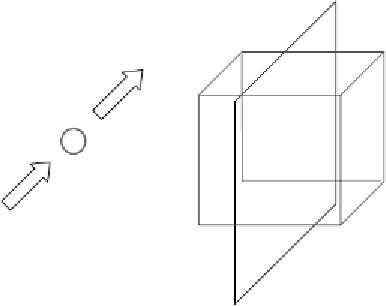Environmental Engineering Reference
In-Depth Information
Table 5.8
Description of air-based cooling systems with achievable supply air temperatures and cooling
power
System description
Supply temp./
◦
C
Cooling power/W
1: Heat exchanger (HES)
22.0
671
2: Adsorption wheel (AWheel)
19.6
832
3: Contact matrix (CMAU)
19.4
846
4: Heat exchanger absorber (HEAU)
18.8
886
Model Development
To evaluate the potential of the different system technology options for optimization,
a numerical model was set up for both the HEAU and the CMAU.
Heat ExchangerAbsorberUnit (HEAU)
The differential control volume including
the ambient air, water film, desiccant solution film and return air, in a typical absorber
chamber of the HEAU, is shown in Figure 5.73. Heat and mass balances developed
separately for the three nodes (ambient air node 1, water/heat exchanger wall/desiccant
solution node 2 and return air node 3) are shown below. The following subscripts are
used:
A
, ambient air;
R
, return air;
W
, liquid water in film;
D
, water vapour;
S
, salt
solution;
a
, air.
Ambient Air Node 1
Energy balance: the differential enthalpy of the air
h
A
corre-
sponds to the convective heat transfer from water film to air
Q
c,A
plus the evaporation
h
W,out
,
m
h
S,in
,
m
,
ξ
S,in
W,out
S,in
h
R,in
,x
R,in
h
A,out
,x
A,out
z
h
Abs
h
ev
1
2
m
W
3
m
W
y
Q
Q
C,R
C,A
h
A,in
,x
A,in
h
R,out
,x
R,out
h
W,in
,
m
W,in
h
S,out
,
m
ξ
S,out
,
S,out
Figure 5.73
Temperature nodes, enthalpy and heat transfer coefficients of the HEAU











Search WWH ::

Custom Search